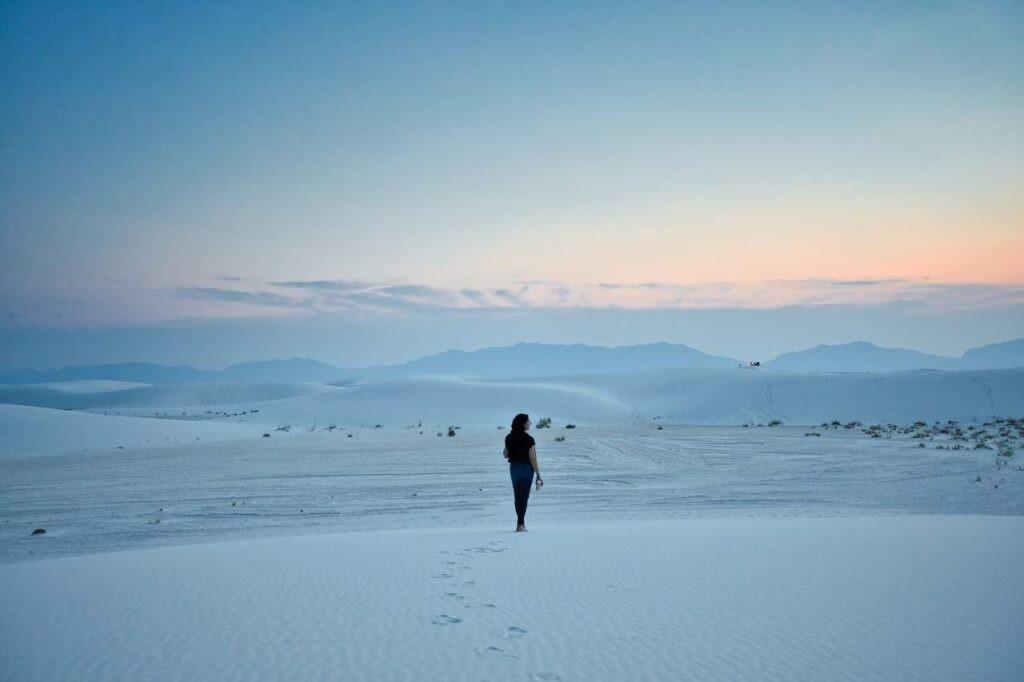Go ahead and take off your shoes. Even during the height of summer, the sands feel cool.
The landscape itself unveils new mysteries as scientists poke into its inner workings. That’s one reason its elevation to national park status calls for celebration: The national monument language spoke solely to preserving the dunes and their sand; the national park designation encompasses other natural resources, a nod to the robust research under way and a spur for more of it.
“In the last 20 years or so, a lot of what we know about the park has changed,” says David Bustos, resource program manager with White Sands National Park. In fact, the designation specifically cited recent discoveries in paleontology, archaeology, geology, and hydrology. “That allows us to request special assistance and additional funds to understand these resources, but also to preserve them. Now it’s part of our mission.”
White Sands remains a largely untapped wonder, drawing researchers from throughout the United States and beyond. Eric Metzler, the resident moth expert, began researching species in the park in 2007. That thrilled Bustos, and the two expected to soon amass a comprehensive view of all moth species in the park.
Instead, Metzler is still at work, having identified 600 species in a swath only 100 yards across and 2 miles long. Each year, he finds and describes a new species just one dune over from the previous. Of the 60 new species he has discovered in White Sands, an astonishing 54 of them are endemic, found only in this hot whitescape of an environment. “That particular rate of endemism is unknown in the world, except perhaps in the Galápagos Islands,” he says.
“It’s a very unique place, so it draws a lot of people for that reason,” says Ryan Ewing, an associate professor of geology at Texas A&M who comes to the park to study its sand dunes. “The reason we go out there is that this is like a natural laboratory.”
Read More: How the Dunes at White Sands Shift Over Time
The park is also reaching out to Native tribes, many of whom have stories that add a layer to the archaeological work under way and the understanding of how the landscape has changed over time.
“People visiting White Sands have had a special connection for a long, long time,” Bustos says. “It’s a special place, and it always has been.”
Like the colors of the sunset reflecting off the dunes, Bustos finds variety in the work here, be it research on fossil footprints, a potential mission to Mars, or the military activities at nearby White Sands Missile Range. “There are so many different pieces,” he says. “So many incredible stories, you never know how the day’s going to go or what you’re going to find.”
WHITE SANDS NATIONAL PARK
Some White Sands experiences are currently unavailable, but the park is open. When restrictions lift, expect sunset concerts, star parties, and campouts. Admission is $20 per vehicle or $15 per person (if only one adult is in a vehicle), good for seven days. You can drive up to 16 miles in a loop to view the dunes. The park is open every day of the year except Christmas. Winter hours (November 1–February 7) are 7 a.m.–6 p.m. Check the website for other hours, restrictions, and changes. Dogs and other pets must be on a leash. Bicycling is permitted on the asphalt and packed gypsum, but not on the dunes themselves. 575-479-6124.


























